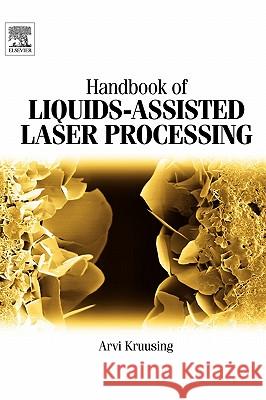Handbook of Liquids-Assisted Laser Processing » książka
Handbook of Liquids-Assisted Laser Processing
ISBN-13: 9780080444987 / Angielski / Twarda / 2007 / 464 str.
Laser processing of solid materials has been commonly performed in gas ambient. Having the workpiece immersed into liquid, having a liquid film on it, or soaking the material with liquid gives several advantages such as removal of the debris, lowering the heat load on the workpiece, and confining the vapour and plasma, resulting in higher shock pressure on the surface. Introduced in the 1980s, neutral liquids assisted laser processing (LALP) has proved to be advantageous in the cutting of heat-sensitive materials, shock peening of machine parts, cleaning of surfaces, fabrication of micro-optical components, and for generation of nanoparticles in liquids. The liquids used range from water through organic solvents to cryoliquids. The primary aim of Handbook of Liquids-Assisted Laser Processing is to present the essentials of previous research (tabulated data of experimental conditions and results), and help researchers develop new processing and diagnostics techniques (presenting data of liquids and a review of physical phenomena associated with LALP). Engineers can use the research results and technological innovation information to plan their materials processing tasks. Laser processing in liquids has been applied to a number of different tasks in various fields such as mechanical engineering, microengineering, chemistry, optics, and bioscience. A comprehensive glossary with definitions of the terms and explanations has been added. The book covers the use of chemically inert liquids under normal conditions. Laser chemical processing examples are presented for comparison only.
- First book in this rapidly growing field impacting mechanical and micro/nano-engineering
- Covers different kinds of liquid-assisted laser processing of a large variety of materials
- Covers lasers emitting from UV to IR with pulse lengths down to femtoseconds
- Reviews over 500 scientific articles and 300 inventions and tabulates their main features
- Gives a qualitative and quantitative description of the physical phenomena associated with LALP
- Tabulates 61 parameters for 100 liquids
- Glossary of over 200 terms and abbreviations











